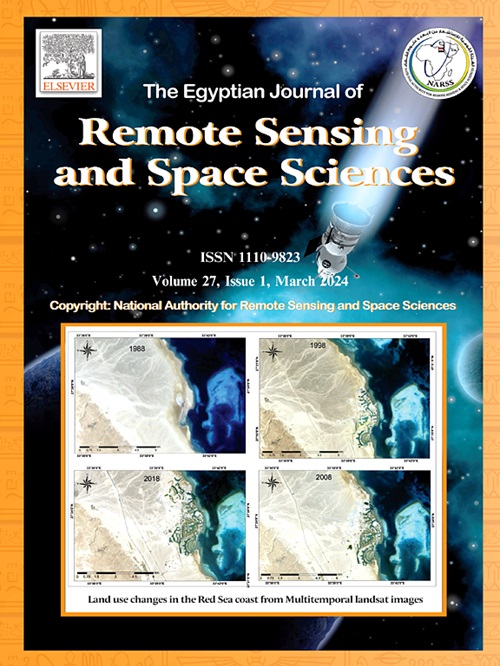利用印度洋空间遥感数据实现座头鲸在边缘装置上的可视化追踪
IF 3.7
3区 地球科学
Q2 ENVIRONMENTAL SCIENCES
Egyptian Journal of Remote Sensing and Space Sciences
Pub Date : 2024-11-07
DOI:10.1016/j.ejrs.2024.10.004
引用次数: 0
摘要
尽管禁止商业捕鲸,座头鲸种群的保护仍面临着持续的挑战,包括人类造成的死亡。高分辨率卫星图像的最新进展为估算鲸鱼种群数量带来了希望,尤其是在偏远和人迹罕至的地区。然而,研究方面仍然存在巨大的差距,因此需要创新的方法来进行有效的监测和保护工作。本文介绍了一种新颖的方法,该方法将高分辨率卫星图像与最先进的深度学习技术相结合,用于监测和保护座头鲸种群,重点关注印度洋地区。具体来说,该研究探讨了如何应用最先进的深度学习模型(如用于对象检测的 YOLO 和用于分类的 EfficientNet)来自动检测、分类和跟踪卫星图像中的座头鲸。通过利用深度卷积神经网络(CNNs),所提出的集合系统为自动检测、分类和跟踪天基卫星图像中的鲸鱼提供了一种稳健且可推广的方法,从而解决了世界海洋中鲸鱼数量不确定的难题。研究结果表明,该系统的准确率和性能指标都很不错:Segment Anything Model(SAM)的准确率达到了 89.2%,YOLO 的准确率达到了 99.2%,EfficientNet 在各种任务中的准确率达到了 99%。本文章由计算机程序翻译,如有差异,请以英文原文为准。
Visualization of humpback whale tracking on edge device using space-borne remote sensing data for Indian Ocean
The conservation of humpback whale populations faces ongoing challenges, including human-induced mortality, despite the ban on commercial whaling. Recent advancements in high-resolution satellite imagery offer promise for estimating whale populations, particularly in remote and inaccessible regions. However, significant research gaps persist, necessitating innovative approaches for effective monitoring and conservation efforts. This paper presents a novel methodology that integrates high- resolution satellite imagery with state-of-the-art deep learning techniques to monitor and conserve humpback whale populations, with a focus on the Indian Ocean region. Specifically, application of cutting-edge deep learning models such as YOLO for object detection and EfficientNet for classification to automate the detection, classification, and tracking of humpback whales in satellite images is explored. By leveraging deep convolutional neural networks (CNNs), the proposed ensemble system offers a robust and generalizable approach for automatically detecting, classifying, and tracking whales in space-borne satellite imagery, thereby addressing the challenge of uncertain whale populations in the world’s oceans. The results demonstrate promising accuracy and performance metrics: the Segment Anything Model(SAM) achieves an accuracy of 89.2%, YOLO achieves an accuracy of 99.2%, EfficientNet achieves an accuracy of 99% across various tasks.
求助全文
通过发布文献求助,成功后即可免费获取论文全文。
去求助
来源期刊
CiteScore
8.10
自引率
0.00%
发文量
85
审稿时长
48 weeks
期刊介绍:
The Egyptian Journal of Remote Sensing and Space Sciences (EJRS) encompasses a comprehensive range of topics within Remote Sensing, Geographic Information Systems (GIS), planetary geology, and space technology development, including theories, applications, and modeling. EJRS aims to disseminate high-quality, peer-reviewed research focusing on the advancement of remote sensing and GIS technologies and their practical applications for effective planning, sustainable development, and environmental resource conservation. The journal particularly welcomes innovative papers with broad scientific appeal.

 求助内容:
求助内容: 应助结果提醒方式:
应助结果提醒方式:


